
Neck Sharpies: Forty Seconds in Minnesota

 This article stole the sponsor: Starting this season, Neck Sharpies is sponsored by HomeSure Lending and Matt Demorest. Mortgage rates are LOW right now, so if you've been waiting to see if football is actually played as a sign that a refinance can save you a bunch of money, now's a good time to strike. It usually takes Matt and his people about 5 minutes to know if a refi makes sense, and if it doesn't they'll tell you. You know the guy, and you know from a bunch of other readers that he does a better job and charges less than the mills that mistreat Beileins.
This article stole the sponsor: Starting this season, Neck Sharpies is sponsored by HomeSure Lending and Matt Demorest. Mortgage rates are LOW right now, so if you've been waiting to see if football is actually played as a sign that a refinance can save you a bunch of money, now's a good time to strike. It usually takes Matt and his people about 5 minutes to know if a refi makes sense, and if it doesn't they'll tell you. You know the guy, and you know from a bunch of other readers that he does a better job and charges less than the mills that mistreat Beileins.
-----------------------------------------
If I were tell you an offense is running the same handful of plays and throwing to the same four spots most every standard down, how would you defend it? Why not cover those four spots and react to those same plays, training every player in exactly what he has to do to defend them?
Well, Minnesota has ways to stretch your needs. They have good receivers—gotta leave an extra linebacker to keep leverage on them. They have big offensive linemen and a great RB—gotta activate your linebackers before your DL crumble. And they stretch your linebackers between them. They also change up their formations, personnel, and shifts to turn your linebackers into linemen and your safeties into linebackers. And they'll get to the line quickly after a play so they have a good 35 seconds to survey your defense, check into what would work against it, check again if they don't like your reaction, and then run another RPO.
That's a recipe for last year's #7 offense to SP+, one which put up 7.67, 6.25, 6.82, 5.55, and 6.59 yards per play against Penn State, Iowa, Northwestern, Wisconsin, and Auburn to close out 2019. Yet starting mostly the same lineup—though absent a few important lineman and a graduated NFL receiver—Michigan held the Gophers to their least efficient passing outing since 2017. Yes, the year they started Demry Croft and let Khaleke Hudson roam free in the backfield.
That 2017 Minnesota offense got 4.88 yards per play. Demry Croft's career yards per play was also 4.88. Minnesota's offense on Saturday: 4.53. For every snap they took, Minnesota was half a yard per play less efficient than Demry Croft.
It wasn't for lack of trying. I want you to watch this sequence. It's not a play, but all the pre-snap stuff as Brown and Fleck played the game within the game.
Let's unpack it.
[After THE JUMP: How to be in two places at once]
Last week I wrote about how PJ Fleck's RPO offense likes to work. To summarize:
- Get the key unblocked linebacker trapped away from the run game using a run-pass option.
- Provide easy reads on the other side of the field to the same four spots the QB is comfortable throwing to.
A fifth read is the QB runs into the alley
They can run all kinds of route combinations to get the same reads and timing and formations. They can also turn one of these routes off and remove another defender by loading up the other side with bulky dudes. Regardless, one of them should always be open if he keeps it because that means there are only three defenders, or at best a fourth defender being carried from the backside, since the extra LB has gone to defend the run. But if you do the same thing all the time it grows stale. Defenses will start blitzing into running lanes, or have unseen defenders pop up in the four throw spots for easy picks.
So much of Minnesota's RPO offense takes place before the snap. They'll see how the defense is aligned to decide if they've got a defender they can pick on, and often audible if they sense there's something fishy going on. Audibles are where you often see the counters to RPO: a quick toss outside to screw over a slant, or a true play-action to mess with linebackers and safeties hammering down on those crossers.
Michigan's gameplan was to leave the linebacker back on the passing side and trust the rest of their front to deal with the consequences. Minnesota has seen that gameplan before, and has ways to punish it. If you're hanging back on the pass not only will they run, they're going to create matchups with your worst run defenders against their best run blockers, and go right after them.
That brings us to our first slide.
Minnesota here is loading up their run personnel on the left side kind of like a single-wing offense. Why go heavy like that? Because it changes everybody's jobs. Michigan's already been putting their safeties on the edges and their cornerbacks deep all game when there's an "open" (no receiver) side. Two tight ends however turns Michael Barrett into Aidan Hutchinson, Brad Hawkins into a viper, and Gemon Green into your last line of defense.
But all's not right in Gopherland. They may have some matchups, but do they have numbers? To this point Michigan had been rolling a high safety down into the box on these formations, and when Minnesota didn't check out of it they met a safety at two yards.
That is an eight-man box. It is not safe to run into.
So back to our main play. When they notice a safety—Makari Paige—lining up as a hybrid linebacker with one DB deep, it says Michigan wants to play eight in the box again.
If Paige is out there that means Paige is likely to be sitting on the intermediate (#1) route while Josh Ross—who's been converted into the Mike by the alignment—can activate aggressively against anything that resembles a run. This 4-4 look has one too many guys in it for Minnesota's standard RPO. They check to the sideline and get the call, which I'm going to guess is some kind of deep route that puts Paige on Rashod Bateman in a huge amount of space.
I can't be 100% positive but I'm taking clues that the play they get is a variation of this:
Makes sense right? All that space for a good receiver against a new defensive back.
They could also have called a run flip, running a high-low RPO on Makari Paige since they guess he's the important gap's defender on the backside. They did the same to good effect against Daxton Hill earlier, as he banjoed between getting depth on a pass drop and covering the gap they run into. In that case they got Dax for being too anxious about the pass.
watch #30 at the bottom.
Either way Minnesota can waste Michigan's extra man in the box. But then Michigan changes their look:
QB Tanner Morgan is looking right at this, since Paige is the guy they're planning to attack, and Paige is backing out with Ross sliding over. In other words, Michigan is going back to a base two-high look. Whatever was meant to attack Paige now has Ross under it. That also gives Michigan enough defenders to cover the areas Morgan likes to throw to.
On the other hand it pulls 2.5 defenders significantly further from the spot where Minnesota likes to run:
Morgan checks the clock to see if he's got time for an audible. He does.
They get another play in from the sideline:
And share it with the committee:
And Michigan doesn't move. By the time Minnesota snaps it, Michigan still hasn't changed their alignment. The center calls McGrone the "Mike", which means Ross (linebacker on the bottom) is the guy being read again now. The ball is snapped with a second left.
Let's pause here and see if you can guess what play they checked into. I guessed they'd checked into some variant of their standard RPO that runs left or passes to the four spots on the right.
It may have been something like that, but Morgan doesn't wait to see if Ross activates against the run very long—just a quick glance out of the corner of his eye—before making the pitch read. He's sure they've caught Michigan in another passive response to their RPO game, and this play is all about making that read pre-snap and getting the ball outside where the offense has numbers. Do they?
Yes and no. Minnesota got what they wanted, as Michigan's DL are all reached. The key blocks are tight ends versus Michigan's safety and safety-like outside linebacker, and with Ross sitting out on the backside they've got a hat for a hat/an extra gap. However things don't work out for them. Why?
This is also what Michigan wanted. Having the backside DL take backside gaps—essentially a slant without having to slant much—they've realigned themselves so that the DL are again taking DL jobs—Kemp has the backside A gap so McGrone can travel over to that big playside C gap. Hutchinson murdered that frontside B gap, where he hung up both the tackle (#70) who had to seal him and the guard (#65), who appeared in a lot of Michigan defensive highlights. That keeps McGrone free to make the tackle.
Technically they do have Ross caught between things: the sit route by Bateman and that frontside A gap that technically exists between the center tripping Kemp (cheater!) and the left guard who's going to need therapy before he sees another winged helmet.
That gap is of minimal concern because of where Hutchinson is and the direction of the play that was trying to get outside. Had Michigan not been slanting, the linebackers would both have backside gaps, and those gaps would be widening as the mass of people sauntered left together.
With the slant however the edge of the defense is set by Hawkins and then an upfield move by Barrett, barely to the hash. Ross is staying put on the hash so he can break on Bateman or the QB in case of a throwback, and McGrone doesn't have as far to go before he turns vertical.
Also since that side has no receivers, Gemon Green gets to come help clean up. No gain, 3rd and long.
Here's the whole sequence:
LESSONS:
This was just one play-calling battle and both teams had more to show. In fact Michigan prepared a really cool blitz for this game specifically because it messes with Tanner Morgan's reads, and it did. See if you can go through his progressions for him here:
- Cam McGrone crosses Josh Ross, so "re-Mike"—flip the guy you're reading to Ross.
- Ross has stepped too far with the run to be in the way of the TE's route to spot #1.
- Crap, it's already too late because I was watching those linebackers. That's okay, TE will go to spot #2.
- Hey, why isn't that safety (ahem, cornerback) attacking the run?
Oh right, he doesn't need to because Michigan's got this.
Josh Ross also finally learned how to drop into those spots. Morgan's effectiveness over the years has been tied to his system because it rarely betrays him and he knows it well enough. But if you speed him up enough he's like every other quarterback; he won't think before doing the next thing he was taught to do.
Let's read with Tanner again through this RPO/bluff arc.
- Josh Ross is my read man. He's stepping with the direction of the run: keep.
- Paige is going with the flat route so #1 should come open if the safety isn't hammering down on him.
- No safety, I'm clear, which is good because this Feldman Freak is about to kill me again.
- LOL JOSH ROSS!
That's just a Cover 2 look converting to Cover 3 but Tanner Morgan isn't thinking in terms of coverage because his system is about finding your guy at spot 1, 2, 3, 4. He's not expecting Ross to reverse course from past the middle of the field, get depth, and get underneath. But the back-foot throw gives him time, and he knows exactly which spot to go, and presto! Game over!
Minnesota gained their yards mostly on two long throws and a few good runs when Michigan lost the edge for one reason or another. The RPO game also got a few slants when they caught Ross out in the Viper role (like he is here). The other thing that worked early was play-action, because that opens up a more diverse passing game. Minnesota wasn't completely shut down. And there was a drive when the running game rolled over some 3-3-5.
However Michigan's strategy against RPOs largely worked because they had the players to do it. Minnesota wanted to do more than hand it off and hope their OL could get some victories against Michigan's DTs, or their tight ends could push around Barrett and the safeties. But Michigan was content to let them move their pieces around where they may, counter with Aidan Hutchinson or Kwity Paye popping up in B gaps, and trust their linebackers to cover a lot of ground.
Even with 40 seconds to change their call twice, nothing could be done about the fact that Michigan's front was better than Minnesota's, and Michigan knew it, so they didn't have to commit any more material than necessary to stopping it.
October 27th, 2020 at 3:22 PM ^
Solid read.
October 27th, 2020 at 3:25 PM ^
I think this highlights the power of Don Brown and how he attempts to set up players for success. So many Minnesota completions whizzed past Josh Ross, and it was pretty clear the defensive scheme put him there specifically to dissuade or break up passes...Minnesota was just good at making him wrong. Finally paid off at the end, and Ross's expression was "fuckin' finally" after he nabbed the pick.
October 27th, 2020 at 3:39 PM ^
Ah yes, Demry Croft...wait no who? Oh wow, Minnesota is in white in that photo, that was 2017...YIKES for the Gophers
October 27th, 2020 at 4:03 PM ^
Master level class being taught by Seth.. Great job!
October 27th, 2020 at 5:19 PM ^
Seth's my favorite author!
Troubling last paragraph though.
October 27th, 2020 at 4:12 PM ^
That's really cool. Defense is hard and Don Brown is smart.
I like that you can solve the Fleck RPO - might rub the shine off of PJ a bit.
What do we think? Do enough B1G teams have the pieces to implement this same solution? Northwestern maybe? OSU definitely. Maybe PSU? Iowa? Wisconsin? That's a lot of losses if your system has been downloaded.
October 27th, 2020 at 4:16 PM ^
I think it probably comes back to the trenches. Michigan baited Minnesota into handing it off a ton on these reads, assuming that the M DL can win those reps, and knowing that they weren't likely to be plowed down the field. This isn't too different than some defenses deciding that any handoff from Denard on a Zone Read was a win for the D.
In this case, Michigan picked their poison (Make Minnesota try to beat us on the ground), and knew they could run away from Minnesota anyway.
October 27th, 2020 at 5:27 PM ^
This exactly. Anytime you have an option team where option A is way better than option B, the D should force the team to do option B.
October 27th, 2020 at 7:59 PM ^
Building a big lead with a productive offense had to help make the decision easy: force the run and live with it.
October 27th, 2020 at 11:55 PM ^
Great point. The offenses ability to score on 6 drives (I believe) may have, for once, allowed the defense to not have to win the game by taking risk.
Brown and Gattis are becoming a great pair.
October 28th, 2020 at 2:36 PM ^
Yes, exactly. If Michigan had only scored 21 points, folks would be complaing that Don Brown's defense got pushed around and gave up too many long drives.
But with a productive offense, this approach becomes much more palatable. Definitely felt like more of a Big 12 kind of approach where you just try to slow them down enough on defense to let your offense win.
October 27th, 2020 at 4:16 PM ^
This is quite interesting. Looking forward to the grades. Hawkins not going to grade out very well and he's our only senior in the secondary.
October 27th, 2020 at 6:59 PM ^
Hawkins was up and down just to spite Brian for calling him boring. Had some nice plays but gave up the edge 1-2 times more than he should have (FWIW the TD looked like a hold to me).
October 27th, 2020 at 4:26 PM ^
I get tired of typing this sometimes, but... good shit, Seth.
October 27th, 2020 at 4:40 PM ^
Fascinating. These write ups make me appreciate just how much football players need to be processing on every single play to do it correctly. Small wonder some take a few years in a system to become proficient.
October 27th, 2020 at 4:44 PM ^
Solid write-up - thanks Seth
October 27th, 2020 at 6:10 PM ^
Great job Seth. That was incredibly informative!
October 27th, 2020 at 6:56 PM ^
Thanks. It's hard to imagine many other college team blogs have this level of info and savvy.
October 27th, 2020 at 10:55 PM ^
It's actually easy...they sure as hell don't!
October 27th, 2020 at 7:32 PM ^
Logged in just to upvote
Also,Minny's OL held a lot...but no calls
October 27th, 2020 at 7:57 PM ^
Great analysis as always.
Anyone worried about the slants Minn converted and what that means against future teams: see the last sentence of the article.
October 27th, 2020 at 8:01 PM ^
This is probably the 3rd year in a row where I say that I love this blog, and by far Seth’s contributions are my favorite part. This post is the MGoBlog difference.
October 27th, 2020 at 8:33 PM ^
^^^^^^^^^^^^
Where else can you get such an in-depth analysis backed with video confirmation. One can learn so much from these Neck Sharpies. Definitely my favorite part of the game recaps.
Thanks Seth and GO BLUE ???
October 27th, 2020 at 8:59 PM ^
Wait! During the game thread and, I suspect, the defense snowflake, many people said Brown should be fired because the defense sucked. Now I read that he did good...
I'll believe Seth.
Good shit, Seth - as always!!
October 28th, 2020 at 1:12 PM ^
Hey, goddamnit! That's my line.
October 27th, 2020 at 11:47 PM ^
Great read!
October 28th, 2020 at 12:12 AM ^
I love these write ups, it's so much more fun to see the chess being played and know what's going on
October 28th, 2020 at 12:36 AM ^
Love this depth. Thank you.
I think many who have been critical of the run defense (not talking about Seth or site authors here) fail to recognize that Michigan started playing more two high late and tinkering with looks because we were ahead by a jillion Don Brown wanted to try some stuff.
October 28th, 2020 at 10:07 AM ^
Yeah Harbaugh & Co. definitely seem place a high value on game reps. I noticed Herby and Fowler kept talking about how many players Michigan was subbing all night. From the first drive, it felt like there was an effort to get everyone up to speed in live action ASAP.
October 28th, 2020 at 8:17 AM ^
Even with 40 seconds to change their call twice, nothing could be done about the fact that Michigan's front was better than Minnesota's, and Michigan knew it, so they didn't have to commit any more material than necessary to stopping it.
This worked great against Minnesota. I know no one is saying it here, that it could work against anyone, but it's this philosophy I think that the more talented teams take advantage of ah la OSU.
When it works it's beautiful and a sight to behold. When it doesn't it can feel like a steamrolling.
Great write-up as usual, Seth.
October 28th, 2020 at 11:38 AM ^
Seth, this is a bit of a tangent but still on the topic of defense. You were spot on last week on the WTKA Rountable (I think it was there) about how to measure defensive success in the “Everyone is the Big 12” era. It’s all about getting stops- yards can tell part of the story, but despite the effort of advanced stats to try and turn yards into win expectancy, etc just doesn’t tell the story. So tying that back to the article, letting Minnesota run for ~4 yards while taking away big play potential is a win.
October 28th, 2020 at 11:47 AM ^
Morgan is the definition of a pick and stick QB that doesn't have to read coverage. This is what you call a system QB. The adjustments Michigan players made on the fly to respond to the nuances of the game are amazing. Football is as cerebral as it is physical. Don Brown devised some clever schemes to stop this offense. Kudos
October 28th, 2020 at 5:04 PM ^
The less optimistic take is that Minnesota's missing OL were the key to the game. If they're at full strength, we probably cannot handle them the same way.
That said, it seems pretty clear that Don Brown clearly understands what he can ask players to do and what they can't, and when he has the horses, really crush an offense. He is flexible and builds his defense and plans around not just the strengths and weaknesses of his team, but of the opponent.
His only real problems have come when there simply is no way to cover our weakness from the opponent's strengths.
We're basically in the position of playing Malone and Stockton to OSU's Jordan. We're putting players into the NFL at incredible rates, we have so much talent at some spots (like RB) that there aren't enough snaps to go around ... and it isn't enough because our primary (and to the Demand Excellence fans, only) measuring stick is playing as well as any college team ever has.
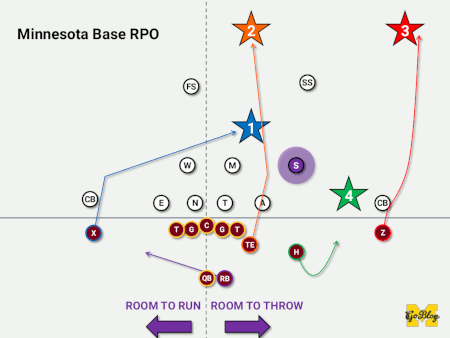
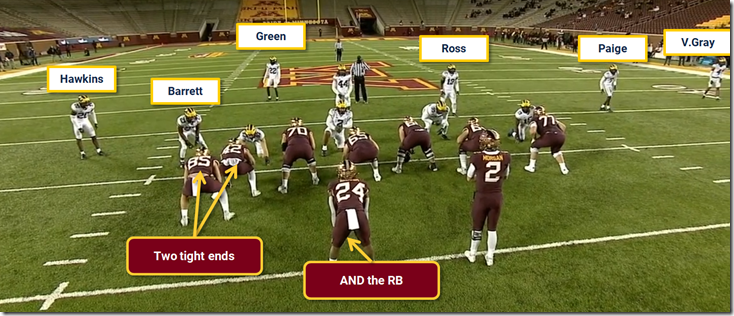

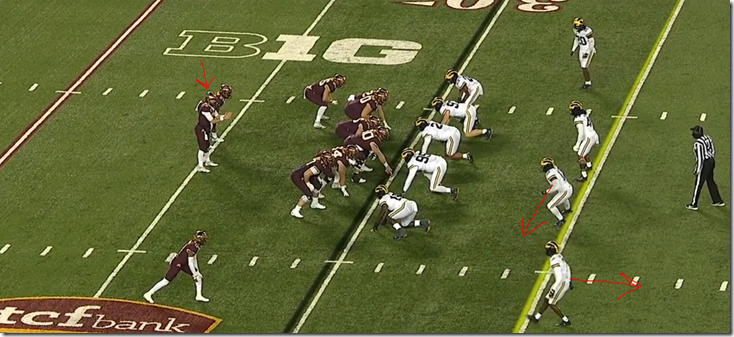
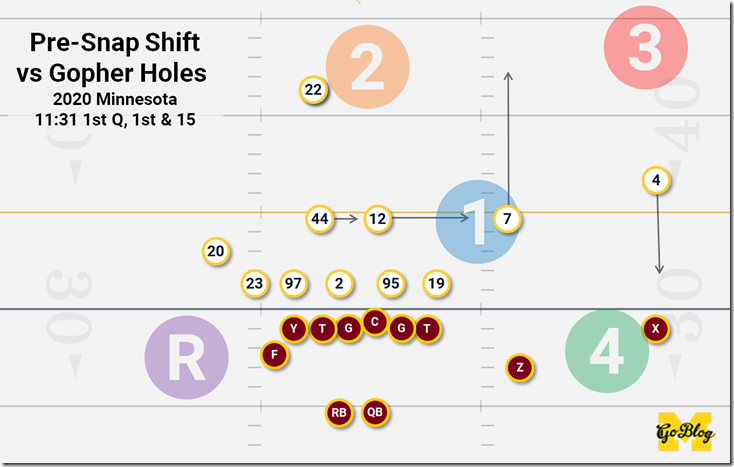
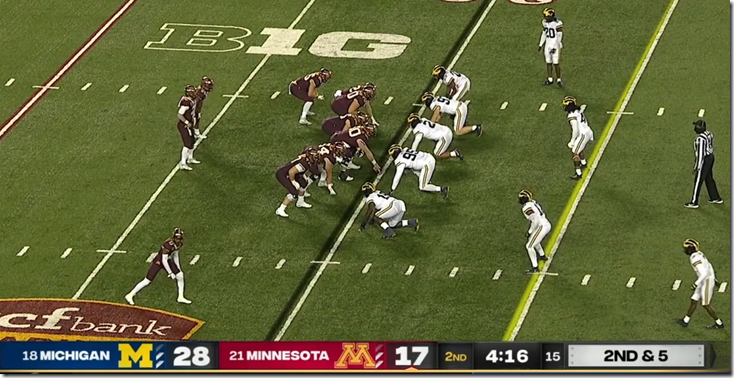
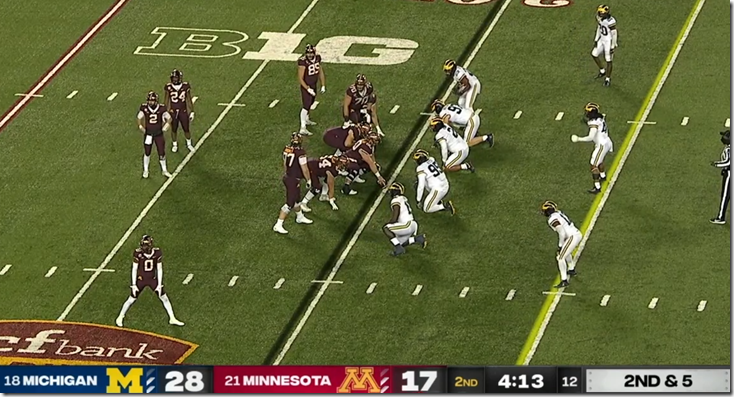
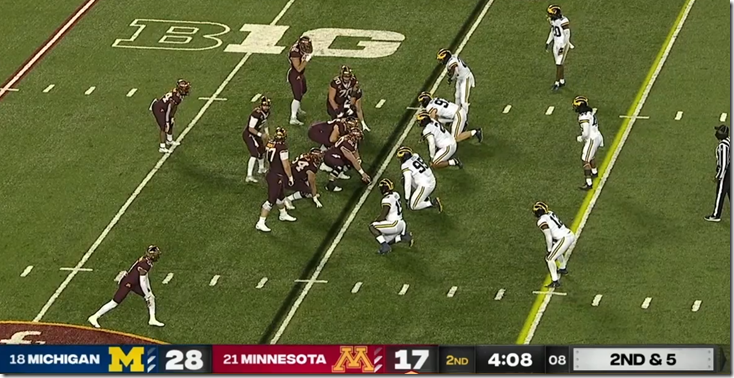
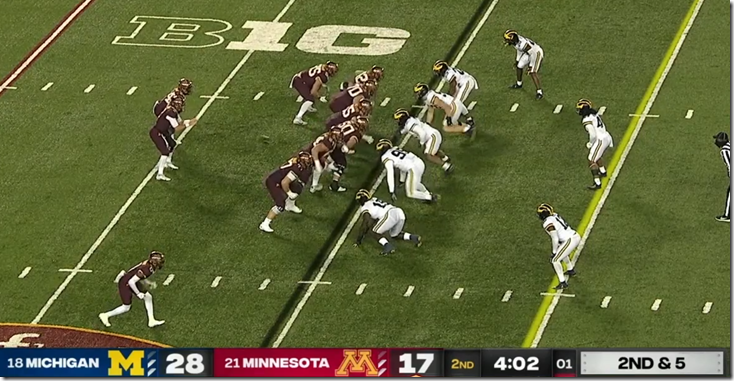
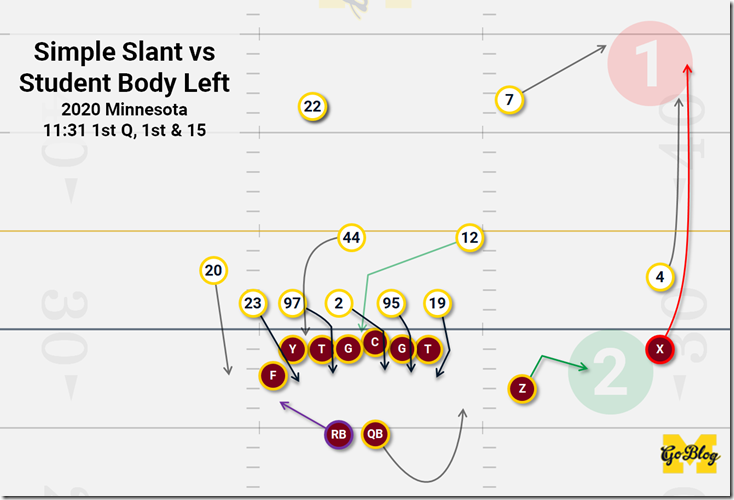
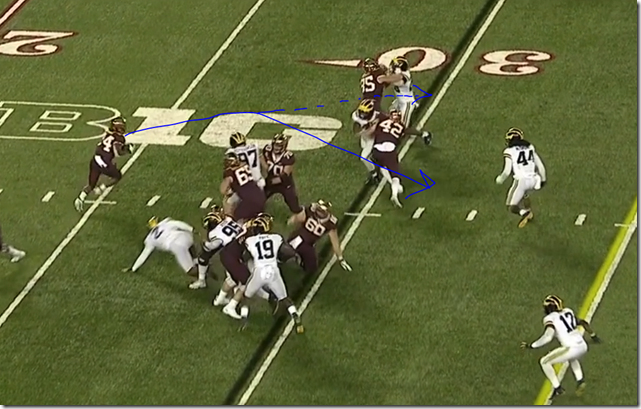
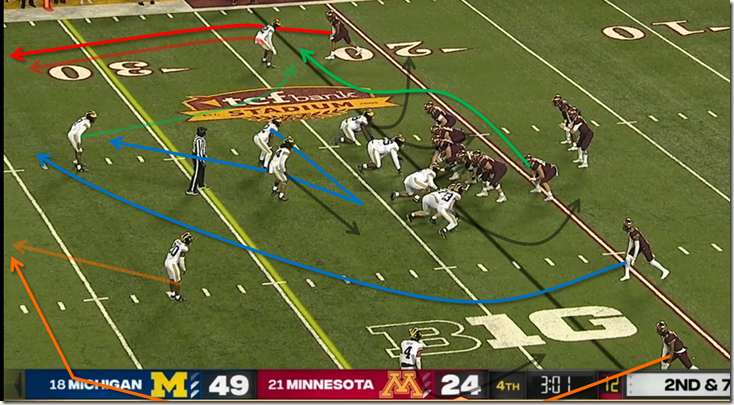
Comments